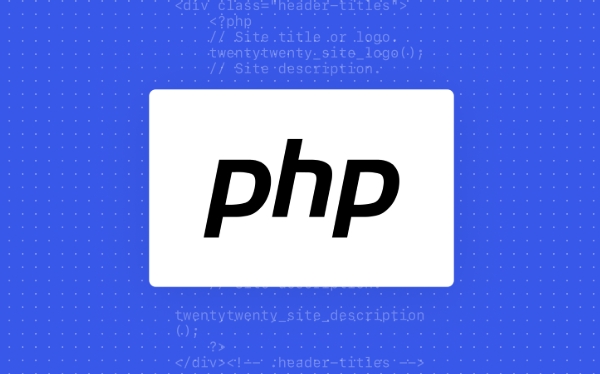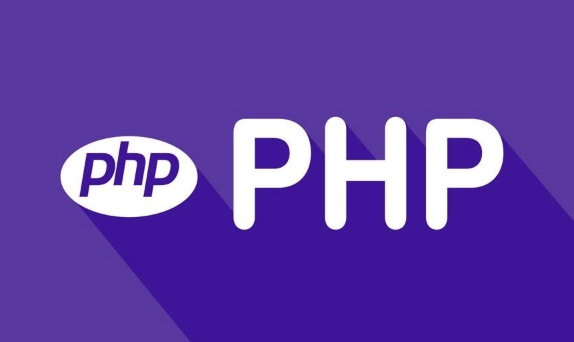PHP streams provide a powerful, unified interface for handling file, network, and memory-based I/O efficiently. 1. Instead of loading entire files into memory with functions like file_get_contents(), use fopen() with streams to process large files incrementally. 2. Leverage stream wrappers like php://temp (memory with disk fallback) and php://memory (in-memory only) for efficient buffering. 3. Use stream_context_create() to customize network requests with headers, methods, and timeouts. 4. Stream large downloads directly to disk using stream_copy_to_stream() to avoid memory overload. 5. Apply built-in or custom stream filters (e.g., string.rot13) for on-the-fly data transformation. 6. Register custom stream wrappers via stream_wrapper_register() for protocols like s3://. 7. Optimize performance by using stream_copy_to_stream(), setting timeouts, checking stream metadata, avoiding unnecessary SSL disablement, and enabling non-blocking I/O when needed. By processing data in chunks and leveraging PHP’s stream abstraction, developers achieve scalable, memory-efficient, and flexible I/O operations essential for robust applications.

When dealing with file and network operations in PHP, many developers stick to basic functions like file_get_contents() or fopen() without realizing the full power behind PHP’s stream abstraction. Leveraging PHP streams can significantly improve efficiency, flexibility, and control over I/O operations—especially when handling large files, remote resources, or custom data sources.

PHP treats files, network sockets, data compression, and even in-memory buffers as streams, providing a unified interface for reading and writing data. This abstraction is more powerful than it first appears.
What Are PHP Streams?
At its core, a stream in PHP is a resource object that exhibits consistent behavior regardless of its underlying source—be it a local file, HTTP response, or php://input. Streams are managed by PHP's wrapper system, which handles the protocol-specific logic (e.g., http://, ftp://, zlib://).

You can think of a stream as a pipeline through which data flows, and PHP lets you manipulate how that flow behaves.
Common stream wrappers include:

-
file://— local files (default) -
http:///https://— HTTP requests -
ftp://— file transfers -
php://— access to PHP’s input/output streams (likephp://stdin,php://memory) -
data://— embed data directly in a URI -
zlib://— read compressed files directly
Efficient File Handling with Streams
Instead of loading an entire file into memory with file_get_contents(), using a stream allows you to process data incrementally, which is crucial for large files.
$stream = fopen('large-file.csv', 'r');
if ($stream) {
while (($line = fgets($stream)) !== false) {
// Process one line at a time
handleLine($line);
}
fclose($stream);
}This approach uses minimal memory and avoids timeouts or memory exhaustion.
Use memory-efficient stream wrappers:
php://temp— stores data in memory until a threshold, then spills to diskphp://memory— always in-memory (fast but limited bymemory_limit)
Example:
$stream = fopen('php://temp', 'r ');
fwrite($stream, 'Large chunk of data');
rewind($stream);
echo stream_get_contents($stream); // Read all
fclose($stream);This is useful for building data buffers without risking memory overflow.
Network I/O Made Flexible
Streams simplify network operations with built-in support for protocols and context options.
For example, making an HTTP request with custom headers and timeout:
$context = stream_context_create([
'http' => [
'method' => 'GET',
'header' => "User-Agent: MyApp/1.0\r\n",
'timeout' => 15
]
]);
$stream = fopen('https://api.example.com/data', 'r', false, $context);
if ($stream) {
$response = stream_get_contents($stream);
fclose($stream);
}You can also stream large downloads directly to disk:
$in = fopen('https://example.com/bigfile.zip', 'r', false, $context);
$out = fopen('/var/tmp/bigfile.zip', 'w');
stream_copy_to_stream($in, $out);
fclose($in);
fclose($out);This avoids loading the entire file into memory—ideal for limited environments.
Custom Stream Filters and Wrappers
PHP allows you to register custom stream filters or wrappers, enabling powerful use cases like on-the-fly encryption, transformation, or logging.
Adding a filter to modify stream content:
$stream = fopen('data.txt', 'r');
stream_filter_append($stream, 'string.rot13'); // Apply ROT13 encoding
echo fread($stream, 1024); // Output will be encoded
fclose($stream);You can also create custom filters for tasks like sanitizing input or compressing output.
For advanced users, stream_wrapper_register() lets you define how a protocol behaves—say, a s3:// wrapper for direct AWS integration.
Performance Tips and Best Practices
-
Use
stream_copy_to_stream()instead of reading entire contents manually—it’s optimized and handles large data efficiently. -
Set appropriate timeouts via
stream_context_create()to avoid hanging on slow network responses. -
Check stream metadata with
stream_get_meta_data()to monitor status (e.g., timeouts, EOF). - Disable SSL verification only in dev—never in production.
-
Use non-blocking I/O with
stream_set_blocking($stream, false)for concurrent operations (e.g., handling multiple sockets).
Conclusion
PHP streams are more than just file handlers—they’re a robust, extensible system for managing all kinds of I/O. Whether you're reading multi-gigabyte logs, downloading remote content, or building custom data pipelines, using streams properly leads to cleaner, more efficient, and scalable code.
The key is to avoid loading everything into memory and instead process data in chunks. Once you start thinking in terms of streams, you’ll find they’re indispensable for serious PHP applications.
Basically, if you're not using PHP streams beyond fopen(), you're missing out.
The above is the detailed content of Leveraging PHP Streams for Efficient File and Network I/O. For more information, please follow other related articles on the PHP Chinese website!

Hot AI Tools

Undress AI Tool
Undress images for free

Undresser.AI Undress
AI-powered app for creating realistic nude photos

AI Clothes Remover
Online AI tool for removing clothes from photos.

Clothoff.io
AI clothes remover

Video Face Swap
Swap faces in any video effortlessly with our completely free AI face swap tool!

Hot Article

Hot Tools

Notepad++7.3.1
Easy-to-use and free code editor

SublimeText3 Chinese version
Chinese version, very easy to use

Zend Studio 13.0.1
Powerful PHP integrated development environment

Dreamweaver CS6
Visual web development tools

SublimeText3 Mac version
God-level code editing software (SublimeText3)

Hot Topics
 php regex for password strength
Jul 03, 2025 am 10:33 AM
php regex for password strength
Jul 03, 2025 am 10:33 AM
To determine the strength of the password, it is necessary to combine regular and logical processing. The basic requirements include: 1. The length is no less than 8 digits; 2. At least containing lowercase letters, uppercase letters, and numbers; 3. Special character restrictions can be added; in terms of advanced aspects, continuous duplication of characters and incremental/decreasing sequences need to be avoided, which requires PHP function detection; at the same time, blacklists should be introduced to filter common weak passwords such as password and 123456; finally it is recommended to combine the zxcvbn library to improve the evaluation accuracy.
 PHP Variable Scope Explained
Jul 17, 2025 am 04:16 AM
PHP Variable Scope Explained
Jul 17, 2025 am 04:16 AM
Common problems and solutions for PHP variable scope include: 1. The global variable cannot be accessed within the function, and it needs to be passed in using the global keyword or parameter; 2. The static variable is declared with static, and it is only initialized once and the value is maintained between multiple calls; 3. Hyperglobal variables such as $_GET and $_POST can be used directly in any scope, but you need to pay attention to safe filtering; 4. Anonymous functions need to introduce parent scope variables through the use keyword, and when modifying external variables, you need to pass a reference. Mastering these rules can help avoid errors and improve code stability.
 How to handle File Uploads securely in PHP?
Jul 08, 2025 am 02:37 AM
How to handle File Uploads securely in PHP?
Jul 08, 2025 am 02:37 AM
To safely handle PHP file uploads, you need to verify the source and type, control the file name and path, set server restrictions, and process media files twice. 1. Verify the upload source to prevent CSRF through token and detect the real MIME type through finfo_file using whitelist control; 2. Rename the file to a random string and determine the extension to store it in a non-Web directory according to the detection type; 3. PHP configuration limits the upload size and temporary directory Nginx/Apache prohibits access to the upload directory; 4. The GD library resaves the pictures to clear potential malicious data.
 Commenting Out Code in PHP
Jul 18, 2025 am 04:57 AM
Commenting Out Code in PHP
Jul 18, 2025 am 04:57 AM
There are three common methods for PHP comment code: 1. Use // or # to block one line of code, and it is recommended to use //; 2. Use /.../ to wrap code blocks with multiple lines, which cannot be nested but can be crossed; 3. Combination skills comments such as using /if(){}/ to control logic blocks, or to improve efficiency with editor shortcut keys, you should pay attention to closing symbols and avoid nesting when using them.
 How Do Generators Work in PHP?
Jul 11, 2025 am 03:12 AM
How Do Generators Work in PHP?
Jul 11, 2025 am 03:12 AM
AgeneratorinPHPisamemory-efficientwaytoiterateoverlargedatasetsbyyieldingvaluesoneatatimeinsteadofreturningthemallatonce.1.Generatorsusetheyieldkeywordtoproducevaluesondemand,reducingmemoryusage.2.Theyareusefulforhandlingbigloops,readinglargefiles,or
 Tips for Writing PHP Comments
Jul 18, 2025 am 04:51 AM
Tips for Writing PHP Comments
Jul 18, 2025 am 04:51 AM
The key to writing PHP comments is to clarify the purpose and specifications. Comments should explain "why" rather than "what was done", avoiding redundancy or too simplicity. 1. Use a unified format, such as docblock (/*/) for class and method descriptions to improve readability and tool compatibility; 2. Emphasize the reasons behind the logic, such as why JS jumps need to be output manually; 3. Add an overview description before complex code, describe the process in steps, and help understand the overall idea; 4. Use TODO and FIXME rationally to mark to-do items and problems to facilitate subsequent tracking and collaboration. Good annotations can reduce communication costs and improve code maintenance efficiency.
 Quick PHP Installation Tutorial
Jul 18, 2025 am 04:52 AM
Quick PHP Installation Tutorial
Jul 18, 2025 am 04:52 AM
ToinstallPHPquickly,useXAMPPonWindowsorHomebrewonmacOS.1.OnWindows,downloadandinstallXAMPP,selectcomponents,startApache,andplacefilesinhtdocs.2.Alternatively,manuallyinstallPHPfromphp.netandsetupaserverlikeApache.3.OnmacOS,installHomebrew,thenrun'bre
 Learning PHP: A Beginner's Guide
Jul 18, 2025 am 04:54 AM
Learning PHP: A Beginner's Guide
Jul 18, 2025 am 04:54 AM
TolearnPHPeffectively,startbysettingupalocalserverenvironmentusingtoolslikeXAMPPandacodeeditorlikeVSCode.1)InstallXAMPPforApache,MySQL,andPHP.2)Useacodeeditorforsyntaxsupport.3)TestyoursetupwithasimplePHPfile.Next,learnPHPbasicsincludingvariables,ech






